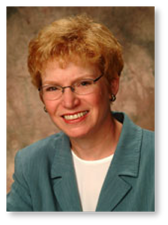The ASSURE model is an ISD (Instructional Systems Design) process that was modified to be used by teachers in the regular classroom The ISD process is one in which teachers and trainers can use to design and develop the most appropriate learning environment for their students. You can use this process in writing your lesson plans and in improving teaching and learning.
The ASSURE model incorporates Robert Gagne’s events of instruction to assure effective use of media in instruction.
A — Analyze learners
S — State standards & objectives
S — Select strategies, technology, media & materials
U — Utilize technology, media & materials
R — Require learner participation
E — Evaluate & revise
Sharon Smaldino: About the Model
 “To ASSURE good learning, I believe it is not one single thing that a teacher or designer should consider, but I do believe that there are areas of emphasis.
“To ASSURE good learning, I believe it is not one single thing that a teacher or designer should consider, but I do believe that there are areas of emphasis.
First, ASSURE starts with looking at the learner in detail. Nothing you plan or design is effective unless you have taken the time to look at the learners. In Illinois, for example, it is now state law that ALL teachers must assess their students’ knowledge and skills prior to instruction to ensure that they differentiate instruction. That means that by understanding where the learners are at the start of instruction, a teacher will make every effort to assist all learners to be successful in their learning endeavors. This new direction supports my position about knowing the learner. I feel that knowing as much as possible about your learners is critical to design and implementation of instruction.
Second, the second letter in ASSURE, S, refers to knowing the intended outcomes or expectations. No instruction should begin without everyone having a clear understanding of what is supposed to happen in the instruction. This does not preclude the possibility of additional learning taking place, but without a road map, some of your learners may well be “lost.” And, especially in the schools today, as we edge closer to the 100% of all students meeting or exceeding expectations, I believe that students need to know what is expected of them. I do believe that there is more than one “right way” to achieve those expectations and more than one “right medium” to use, because it’s not a one-size fits all world. BUT, as NCLB is still a mandate, we need to find ways to make it possible for our diverse learning population fit into the “mold” that has been outlined for us. Learners need to know what they are to do. And, I add that you cannot assess learning without knowing what was expected. NOW, because I opened that can of worms, let me quickly state that assessment can be formative and summative and can take multiple formats.
But, that is another cup of tea for sure.
My final area of importance in the design and implementation process to ASSURE good learning is the reflection component of evaluation. Once you have completed the design and instruction and gathered the data about the outcomes and impressions from your learners, you need to take the time to consider what went well and what could be changed in that particular instructional event. This information will help you re-design that instructional event for future opportunities. But, this information also guides you on how to better address your learners in instruction beyond this particular instructional event. We often do not put enough emphasis on reflection as teachers and designers, but I do consider that it is not time wasted.
Oh, my goodness, it appears I’ve nearly written the chapter on the ASSURE model. I will close with the idea that it’s not about the technology and media. It’s about the learners and the important decisions we make as designers and
instructors to ensure successful learning opportunities.”
[From Michael M. Grant‘s Comparing Instructional Design Models]